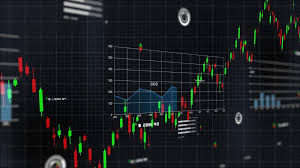
Crypto Trading Models
The landscape of financial trading is undergoing a monumental transformation with the advent of cryptocurrencies and blockchain technology. Among the various aspects of this evolution, Crypto Trading Models https://all-aged-domains.com/page-b17bb067e3922783a92403b488ca811f.html play a crucial role. From algorithmic trading strategies to machine learning applications, the methods employed by traders are becoming increasingly sophisticated. This article delves into several prominent crypto trading models and their implications for investors.
Understanding Crypto Trading
Cryptocurrency trading involves buying, selling, or exchanging digital currencies via exchanges, utilizing innovative models that often differ greatly from traditional financial trading. Understanding these models is key to developing effective investment strategies.
1. Fundamental Analysis
Fundamental analysis in crypto trading focuses on evaluating a cryptocurrency’s intrinsic value by examining related economic, financial, and other qualitative and quantitative factors. Unlike traditional assets where metrics such as earnings and revenues are prevalent, in cryptocurrencies, investor sentiment, technology, and market trends play a major role in shaping value.
2. Technical Analysis
Technical analysis uses historical price data and trading volume to predict future price movements. This model employs various charting techniques and indicators such as moving averages, the Relative Strength Index (RSI), and Bollinger Bands. Traders who rely on technical analysis believe that market sentiment and trading patterns repeat over time, allowing them to predict future price movements.
3. Algorithmic Trading
Algorithmic trading involves using algorithms to automate trading decisions. In the world of cryptocurrencies, this approach is highly popular due to the 24/7 nature of crypto markets. Algorithms can analyze market data, execute trades, and manage portfolios much faster than human traders. Furthermore, algorithmic trading can minimize emotional biases, optimizing trading efficiency.

4. High-Frequency Trading (HFT)
High-frequency trading is a specialized subset of algorithmic trading where large numbers of orders are executed at extremely high speeds. HFT strategies leverage technology to capitalize on minute market inefficiencies. Given the volatility of crypto markets, high-frequency trading can yield significant profits if executed correctly, though it also comes with heightened risks.
5. Sentiment Analysis
Sentiment analysis aims to gauge the mood of traders and investors by analyzing social media, news articles, and forums. By understanding market sentiment, traders can predict potential price movements. Tools and platforms that aggregate this data provide essential insights that can guide trading decisions. This model is particularly important in the crypto space, where news can lead to swift price changes.
The Role of Machine Learning
Machine Learning (ML) has found its way into crypto trading models as an emerging tool for predicting market trends. By analyzing historical data, ML algorithms can identify patterns and correlations that may not be visible through traditional analysis methods. These sophisticated models can continually refine their predictions based on new data, enhancing their efficacy over time.
1. Predictive Analytics
Predictive analytics involves forecasting future price movements based on historical data analysis. Machine learning models can identify non-linear relationships in data and make predictions with a higher degree of accuracy. As traders continue to employ predictive analytics, they can optimize their strategies accordingly.
2. Backtesting Strategies
Backtesting is crucial for assessing the effectiveness of a trading model based on historical data. While backtesting approaches have been around for years, the implementation of machine learning techniques has made it possible to conduct more sophisticated analyses. Traders can refine their strategies by simulating how a model would have performed in various market conditions in the past.

Risk Management in Crypto Trading Models
All crypto trading models carry inherent risks. A robust risk management strategy is essential for protecting investments and minimizing losses. Effective risk management methodologies include setting stop-loss orders, diversifying portfolios across different cryptocurrencies, and regularly adjusting trading strategies based on market conditions.
1. Setting Stop-Loss and Take-Profit Levels
Stop-loss and take-profit orders are crucial components of effective risk management. A stop-loss order enables a trader to set a threshold at which their position will be automatically sold to prevent further losses. Similarly, a take-profit order locks in profits once a specific target is reached, ensuring that traders do not lose gains due to market fluctuations.
2. Diversification
Diversifying a crypto portfolio can reduce risk exposure, especially given the volatility of digital currencies. By investing in a variety of cryptocurrencies, traders can mitigate the impact of a downturn in one asset. A well-balanced portfolio that includes established currencies like Bitcoin and Ethereum, alongside smaller altcoins, can help stabilize returns over the long term.
3. Regular Strategy Adjustments
Markets are dynamic, and trading strategies that worked in one environment may not be effective in another. Regularly adjusting trading models based on up-to-date market analysis is crucial for success. Traders should continuously learn and adapt their strategies to ensure they remain competitive in an evolving landscape.
Conclusion
The future of cryptocurrency trading rests on the continued development and application of innovative trading models. As the market matures, traders will have access to increasingly sophisticated tools that can enhance their decision-making processes. By leveraging fundamental and technical analyses, machine learning, and comprehensive risk management practices, traders can navigate the complexities of the crypto markets effectively. As we move forward, understanding and adapting to these crypto trading models will be key for investors seeking to capitalize on the opportunities presented by the digital currency revolution.